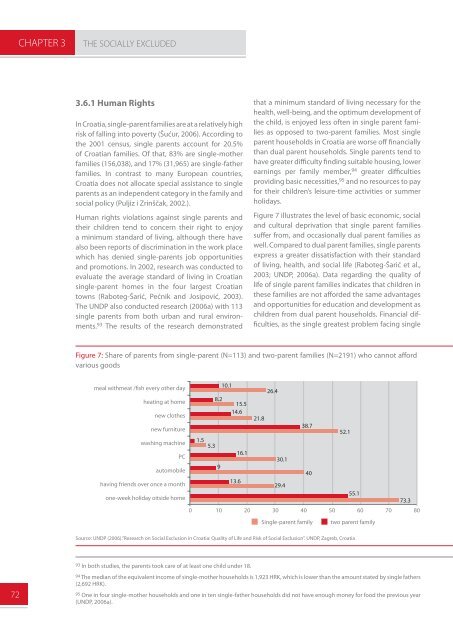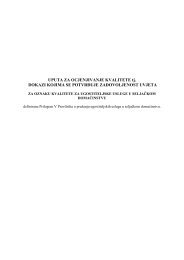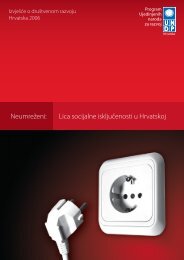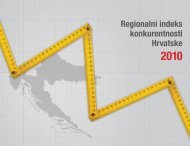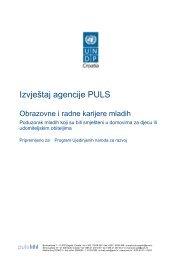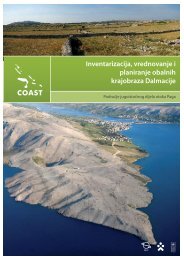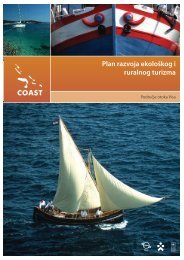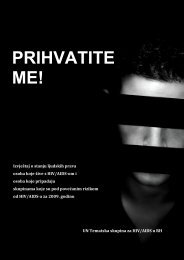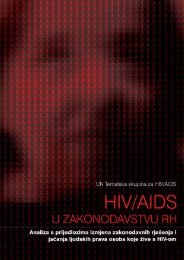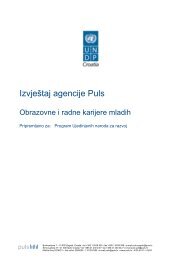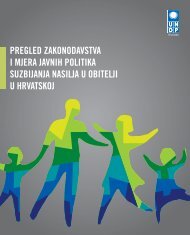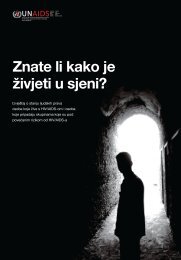THE SOCIALLY EXCLUDEDCHAPTER 33.6 Single ParentsBox 8: Single mother, divorced, has son and daughter, pre-schoolers, employed, lives alone withchildren in a tiny rented apartmentMy husband found another woman and left me and the children two years ago. It was very difficult, because Iwas all alone with two children, and the little one was still a baby. He visits the children now and then, but heworks on and off, so he gives no money for them... It is difficult to survive, because my salary is small, and thechildren need care - I work and can barely pay for the kindergarten. It is hard when I can’t afford something,because it would be easier if I had two salaries, but other people don’t understand what it feels like to haveto ask all the time: “How much is this?”... I don’t know what I’ll do when the children start going to school. Themoney is the biggest problem! I’m scared how I’m going to pay for books and everything when my daughterstarts school next year. She is very clever, so she’ll definitely be a good student... The children are good andcheerful when they don’t think about that. Sometimes they want things I can’t afford to buy, but they are stillgood. It is difficult for me, because I have nobody to look after the kids, and I have to work week<strong>end</strong>s andholidays. Free baby-sitting or kindergarten would help. It is difficult for me to look for another job, becausewhere I work I at least have a salary; I haven’t heard that anybody was hiring shop assistants, anyway. I’mhappy with my job - it’s not too hard, and the salary comes in regularly... The children are sad, because theirdad does not come to visit - it is difficult for me to explain it to them and I tell them that I love them, and thatdad loves them, too, although he is not around. I went to see the kindergarten psychologist, and we talkedabout it... They [children] ask about dad, and he sometimes visits them, but very rarely. They are very happywhen they see him. Once, I was late to pick up my little girl from kindergarten, so somebody asked her whereher mom and dad were, and she later asked me why dad had not come and why he wasn’t around... Thereis nothing good about single parenting - you have to do everything on your own and you have nobody tocomplain to. The only good thing is the children. (Raboteg-Šarić et al., 2003; p. 413)Single father, divorced, has two sons going to primary school, unemployed, lives with children in aone-room apartment of 26m2 as protected tenantI divorced three years ago; my wife abandoned the family one year before that. I first lost my job. I had toclose my business, so for ten months I was trying to find a job, but I couldn’t find one. That is how I becamethe beneficiary of social assistance. I lived on the brink of existence, with no help from anyone. That wasthe worst part of my life, all the sorrows of this world came down on my soul; I had loved my wife... Thebiggest problem is that I stay at home without work when my children go to school. I have a universitydegree, and am not good at trade, so I’m not good at finding jobs of that kind. Material problems are themost pressing. Because of my material status, all my fri<strong>end</strong>s abandoned me as well as my wife’s relatives,even the best man... I’m worried about this material situation, whether I’ll be able to finance my childrenthrough school and what will happen when they graduate, how I’m going to direct them in life in view oftheir potentials. It scares me that I’m alone with them - if something happens to me, they’d have nobodyto rely on. My personal experience is not that bad - I am a single parent and unemployed, and I feel likea slave, but otherwise people do try to help. People are full of understanding for my material problems,they delay my payments, allow me to pay in instalments, and things like that. At least I have managedto resolve the housing issue, because of my status and qualifications. I have received professional helpin upbringing my children; I receive more help than others - that is my experience. I frequently feel thatother people are impressed and that they appreciate me because of my status and my experiences... I’mworried, though, because I have no job. I’m almost certain that in at least three job competitions I wasnot selected because I was a single father. (Raboteg-Šarić et al., 2003;p. 422).71
CHAPTER 3THE SOCIALLY EXCLUDED3.6.1 Human RightsIn <strong>Croatia</strong>, single-parent families are at a relatively highrisk of falling into poverty (Šućur, 2006). According tothe 2001 census, single parents account for 20.5%of <strong>Croatia</strong>n families. Of that, 83% are single-motherfamilies (156,038), and 17% (31,965) are single-fatherfamilies. In contrast to many European countries,<strong>Croatia</strong> does not allocate special assistance to singleparents as an indep<strong>end</strong>ent category in the family andsocial policy (Puljiz i Zrinščak, 2002.).Human rights violations against single parents andtheir children t<strong>end</strong> to concern their right to enjoya minimum standard of living, although there havealso been reports of discrimination in the work placewhich has denied single-parents job opportunitiesand promotions. In 2002, research was conducted toevaluate the average standard of living in <strong>Croatia</strong>nsingle-parent homes in the four largest <strong>Croatia</strong>ntowns (Raboteg-Šarić, Pećnik and Josipović, 2003).The <strong>UNDP</strong> also conducted research (2006a) with 113single parents from both urban and rural environments.93 The results of the research demonstratedthat a minimum standard of living necessary for thehealth, well-being, and the optimum development ofthe child, is enjoyed less often in single parent familiesas opposed to two-parent families. Most singleparent households in <strong>Croatia</strong> are worse off financiallythan dual parent households. Single parents t<strong>end</strong> tohave greater difficulty finding suitable housing, lowerearnings per family member, 94 greater difficultiesproviding basic necessities, 95 and no resources to payfor their children’s leisure-time activities or summerholidays.Figure 7 illustrates the level of basic economic, socialand cultural deprivation that single parent familiessuffer from, and occasionally dual parent families aswell. Compared to dual parent families, single parentsexpress a greater dissatisfaction with their standardof living, health, and social life (Raboteg-Šarić et al.,2003; <strong>UNDP</strong>, 2006a). Data regarding the quality oflife of single parent families indicates that children inthese families are not afforded the same advantagesand opportunities for education and development aschildren from dual parent households. Financial difficulties,as the single greatest problem facing singleFigure 7: Share of parents from single-parent (N=113) and two-parent families (N=2191) who cannot affordvarious goodsmeal withmeat /fish every other dayheating at homenew clothesnew furniture8.210.115.514.621.826.438.752.1washing machine1.55.316.1PCautomobilehaving fri<strong>end</strong>s over once a monthone-week holiday oitside home913.630.14029.455.173.30 10 20 30 40 50 60 70 80Single-parent family two parent familySource: <strong>UNDP</strong> (2006).”Research on Social Exclusion in <strong>Croatia</strong>: Quality of Life and Risk of Social Exclusion”. <strong>UNDP</strong>, Zagreb, <strong>Croatia</strong>93 In both studies, the parents took care of at least one child under 18.7294 The median of the equivalent income of single-mother households is 1,923 HRK, which is lower than the amount stated by single fathers(2,692 HRK).95 One in four single-mother households and one in ten single-father households did not have enough money for food the previous year(<strong>UNDP</strong>, 2006a).


